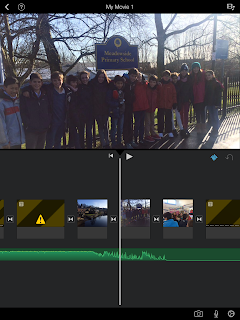Hello girls!
In this entry I’m going to show some resources that I used with my
pupils to work Saint Patrick's day.
I created a power point slide collected some of the resources that can
be used to work Saint Patrick's in Primary 5.
First of all, this celebration can be introduced by a video about a
Leprechaun, helping the teacher to create good atmosphere to start talking
about Saint Patrick. Then I thought it could be good to show another video explaining
briefly the legend.
It’s always important to work vocabulary and there’re some webpages that
have flashcards and images that would be good to use to work Saint Patrick's
day.
Also if we want to create our flashcards I highly recommend to use
Bitsboard and play games in groups with the iPads.
Furthermore, to learn vocabulary in a more attractive way they can be
playing games, such as memory, and every time they turn over a card they have
to say the name of the image. (This would be a LOTS Bloom’s taxonomy activity).
Also, learn more about the legend they can search on the Internet some
webpages explaining it.
Moreover, a good and HOTS activity (linking with Blooms Taxonomy) we can
tell the students to choose 6 clue words about the legend, so they will have to
analyse the previous text that they have searched, and decide which words they
want to use to create a crossword puzzle, introducing the word and making the
definitions.
Although, it can be very creative to look for some Saint Patricks crafts,
and a very useful and recommended application is Pinterest.
Additionally, I founded lots of very interest presentations about the
legend of Saint Patrick's that can be used in class without any problem, and we
can edit and adapt to our needs.
Last but not least, I want to comment that before doing this subject I was
interested in new technologies but after doing I have opened a lot my mind and
now I have more skills and more resources to use in class, and also I’m more
oriented on how to use it in a correct way and try to squeeze it to take
advantage of all the digital resources.
Thank you so much!





















































